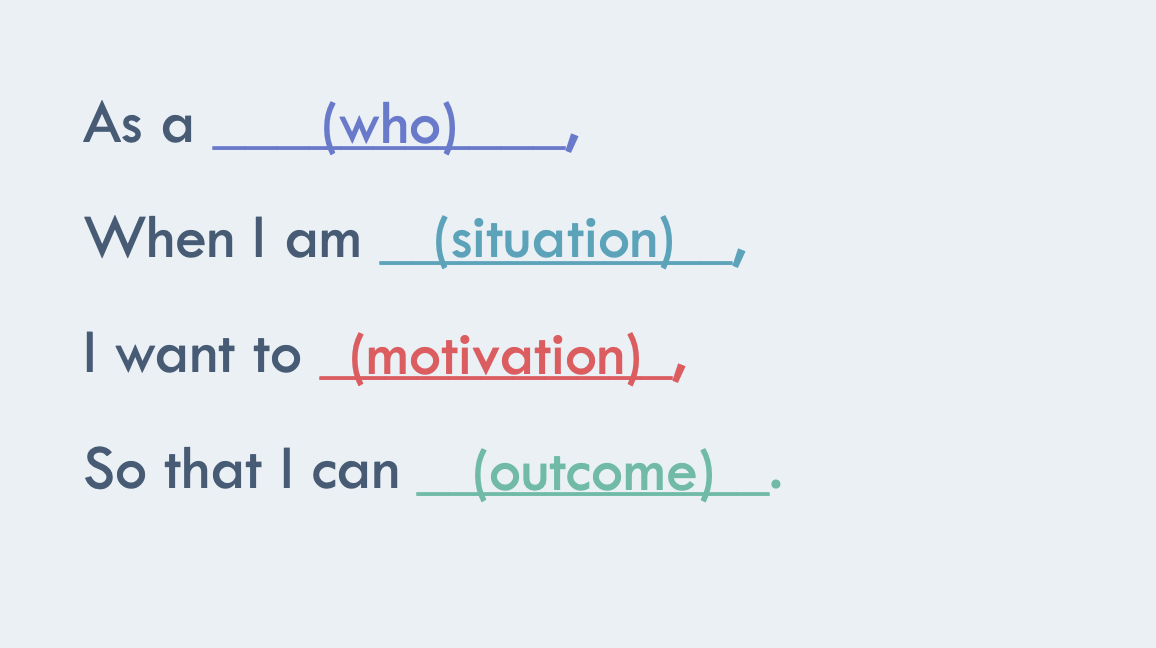Facebook visibility, storytelling power, HubSpot analytics and the Five Cs Model. Our team of eight...
There is not much hocus pocus about it - in fact, it is common sense: that our customers most often buy something from us because they have a need or desire to change an inappropriate situation. What many companies forget is that there must also be a reason to act on that need or desire.
We humans can wait unreasonably long with a desire to change something without doing anything about it. Often it is because there is something that prevents us from doing anything. It can be about priorities - are there other things you would rather spend money on? Or maybe it's that our desired solution doesn't exist, or that we don't know it exists.
Companies should do something about these obstacles. If we are content to solve only part of our potential customers' needs, we may run the risk that they will not make business with us at all. The American Harvard professor Clayton Christensen has developed a concept for this way of thinking.
The concept is called Jobs to be Done - abbreviated to JTBD. But what is JTBD really?
Find the reasons why the job is not being done
Let me give you an example of a JTBD: In my bedroom there is a monster of a wardrobe that I am by no means proud of. It is old, crooked and beaten, and the wardrobe doors cannot be closed. The drawers regularly fall off the rails, and to be honest, that wardrobe annoys me every single day.
I already know exactly what wardrobe I want and where I can buy it, and I also have the money in my account to make the purchase. So why don't I just buy it?
Well, what keeps me from buying is the following:
I live on the fourth floor of an older property with a narrow staircase. Without elevator and in the middle of the busy, inner city. If I have to buy a new wardrobe, I must first disassemble the old one and drag the whole monster down to the rubbish bin, some distance from my home. But in addition, I also have to carry the new wardrobe up the stairs and assemble it in my bedroom, which only offers quite a few square meters of space.
In short, there are many reasons why I have not yet bought a new wardrobe. There is so much I would rather spend my time and my energy on, and that is why I am constantly postponing the project.
Divide into primary and secondary needs
So I have a job that I would like to find a solution for: The job should solve the whole package of my needs, which look like this:
- Primary need: To get a new wardrobe
- Secondary need: Someone who will make sure to dispose of my old wardrobe and install the new one
My primary need can easily be solved: Namely to buy a new wardrobe - I have already found the right one. On the other hand, it lags behind the secondary needs and it becomes the show stopper for my purchase. If anyone would just solve the whole package for me, then I would be the happiest customer the world has ever seen.
Jobs to be Done helps you sharpen your business
When you as a company dive into JTBD, you improve several things: You become better at thinking in innovation processes and business development - because if you know which JTBD your desired customers have, then you 'just' have to make solutions that live up to them. There is thus a unique opportunity to get a strong position in the market for a very specific type of customer. This is good for customer loyalty.
But you can also use JTBD in the communication part of inbound marketing: Once you know what challenge your service or product is being purchased to solve, you can become better at informing people about what job you can solve best, how your solution can be used in the smartest way, and which customers you can't help. If you have JTBD in the back of your mind, you will be a sharper communicator.
But remember, you can not solve everyone's needs - it would be to go overboard. Therefore, focus on your personas when working with the concept. Below you will find some tools to research JTBD for your business.
You can divide JTBD into subcategories so that you can identify several aspects of the customer's needs. There are primarily two overall dimensions of JTBD:
- Primary Jobs to be Done, which describe the task the customer would like solved
- Related Jobs to be Done, which the customer would also like to solve
Under each of these JTBDs there are:
- Functional motivational factors - the practical and objective customer requirements
- Emotional motivational factors - the subjective customer demands related to emotions and perception
The emotional motivational factors are further divided into:
- Personal dimensions - how the customer feels about the solution
- Social dimensions - how the customer feels that he or she will be experienced by others when he or she uses the solution
If we return to the wardrobe story, there is an emotional personal dimension attached to my JTBD: I personally want to feel happy to have a nice wardrobe in my flat where the doors can open and close normally, and where I do not have to to put the drawers back on the rails time in and time out. A new wardrobe will remove my personal unhappiness about my current wardrobe. Hopefully.
And then there’s the emotional social dimension: I no longer want to be ashamed of my bedroom with the dilapidated wardrobe when I invite others into my home. Maybe I even want to leave the door open, so people can see that my bedroom is actually quite neat and tidy.
Create your job story
Identify your different types of customers who have a need that you can or will solve. Write down their Jobs to be Done in a formula that speaks into the following four points:
- Who (persona)
- Motivation (what motivates them?)
- Situation (in which their desire or need arises)
- Desired outcome (what will they be able to do?)
Remember to get around both the primary and secondary JTBDs, and also remember to include the various motivational factors above. You will find that there can be many JTBDs for each persona, and this is where the magic occurs - when you get right under their skin.
The formula becomes your Job Story, and looks like this:
Address your findings
Once you have identified your JTBDs and you know you can fix them, then you need to communicate them.
Did you find that there is a very special reason why someone chooses your company as a supplier? Then craft some content that is about why one should be aware of this difference.
Did you find that there is a very specific situation that triggers a (purchase) action in your persona? Write a blog post about the specific situation, and how it can be resolved.
If you found out that there was a particular outcome that your persona wanted, then address the very specific outcome in your content. You need to hit your personas right where they feel heard and understood.
Enjoy.
P.S. If you know someone who both assembles a new wardrobe for me and gets the old one out of the way, then I have a Job to be Done for this person. Want to know more? Get in contact!




